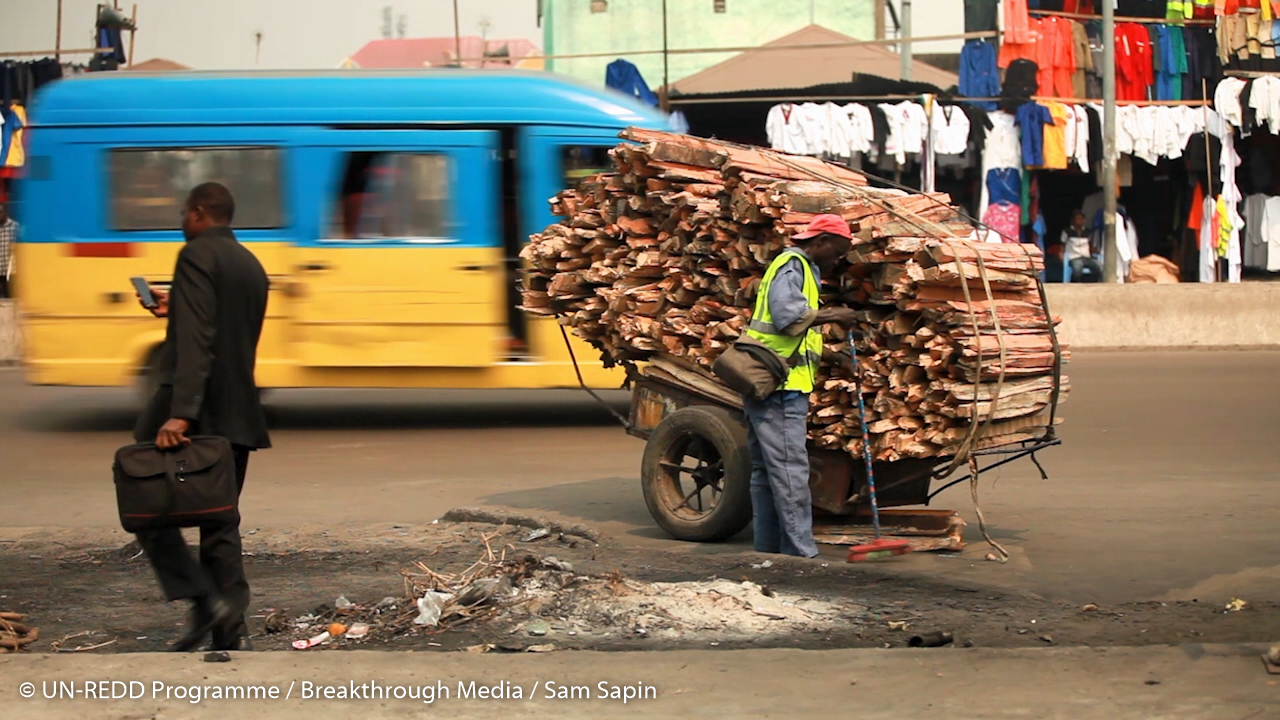20 August 2020
A roadmap to develop national energy policy and clean cooking marks the launch of a key reform for the partnership between CAFI and the DRC
The people of the DRC heavily rely on wood energy as cooking energy.
Wood energy accounted for more than 93% of the country's energy balance in 2015. Moreover, despite a considerable national potential, the access rate to electricity, an average of 9% in 2011, is one of the lowest in Africa and the world.
Diversifying the cooking energy pool is a challenge that had been given too little attention to date.
The DRC’s rapid population growth in recent decades (3.1% per year), combined with an intense urbanisation movement, has greatly increased the pressure to extract wood energy. Far beyond the regeneration capacity of forests on the periphery of major urban centres, this pressure contributes to large crowns of deforestation, themselves structured around transport routes. It is estimated that wood-energy could be responsible for about 58% of forest degradation and 19% of deforestation over 2010-2030.
An adequate legal framework to reduce the use of cooking wood
Therefore, an energy policy that aims to address sustainable wood-energy management and the development of alternative energy has emerged as an important milestone in the Letter of Intent between the DRC and CAFI. This to pursue a threefold objective: reduce forest degradation, combat respiratory diseases and relieve rural households’ budget.
Despite its predominance in the DRC's energy balance, the cooking energy subsector remained marginalized and poorly treated in national laws and decrees. And this, although the partial substitution of wood-energy and Liquefied Oil Gas (LPG) presents substantial potential to meet the Congolese population’s growing energy needs and reduce deforestation.
With the launch of the roadmap in Kinshasa by the Congolese Government last July, a first step has been taken to establish an adequate legal, regulatory and fiscal framework aimed at reducing the share of wood energy in the national energy balance and encouraging investment in LPG.
Complementary approaches: Policy support and actions on the ground
The launch of this roadmap illustrates CAFI’s complementary approaches, enacted through the DRC National REDD+ Fund : on the one hand, support for major reforms at the national level, and, on the other hand, funding initiatives on the ground in partnership with the private sector, the development sector and targeted Congolese populations.
Indeed, in parallel to supporting a new policy framework for energy, CAFI currently funds sustainable energy consumption projects on the ground, reducing unsustainable wood-energy demand. Three types of action aim at reducing the pressure of wood energy on forests:
- Developing alternative energy to wood energy, specifically LPG, reduces the preponderance of wood energy in the national energy mix.
- More efficient consumption of wood energy through the large-scale extension use of energy-efficient stoves reduces the volume needed to meet the remaining demand - with 32,000 improved stoves already planned by integrated programmes across four provinces.
- The development of sustainable energy wood sources, with multi-sectoral provincial programmes, currently aim to reach 10,000 hectares of fuelwood plantation, to which are added 82,000 hectares left in natural regeneration (mise en défens).
These approaches are being implemented within the framework of multi-sectoral, province-wide programmes and the "Sustainable Consumption and Partial Substitution to Wood Energy” programme funded by CAFI through the FONAREDD and jointly implemented by UNDP and UNCDF in collaboration with the four Congolese ministries of Energy, Finance, Environment and Hydrocarbons.

